questions about roses, and catnip...
Hello all,
Okay, so I am new to growing things and have recently planted 13 different roses. ( I might of got to excited about the pretty pictures on the circle bag the grade 1 and half come in, and didn't realize all the work and care it will take for them lol). I have another rose that I have had about 4 years now and moved it a year ago when I bought a home. Last week I noticed it has rust on it and it even went to a one small new rose I recently planted, so I went out and got the bayer 3 n 1...last year it got bombarded by japanese beetles so I sprayed sevin on it. I have been reading on this great forum posts from years ago and seen someone said that if you get catnip and plant it around your roses that the smell or something in it can keep most of the bad crawlies away...has anyone tried this or heard of it?? I went out and got about 10 seed packages of catnip but then got to thinking I don't know what I'm doing anyway, so I should prolly ask the experts here...if not, I can grow it somewhere else, but I was trying to find a way to where I won't have to spray at all, or hopefully not much, and if this works, I was going to try it.
Any ideas, suggestions or thoughts would be super helpful!!
Thanks :)
Comments (21)
nippstress - zone 5 Nebraska
9 years agolast modified: 9 years agoHi Jameya
Welcome to GardenWeb! Sometimes we take a while to respond to things, but it's a good place to get some questions answered. You have two situations going on with your roses that have different treatments.
The first is the rust - if you've had the rose 4 years and are just noticing rust for the first time, odds are you're in a weird weather pattern and the rust will ease off when the weather changes. Most of the people who live in places where a lot of rust happens (like California) learn to pick roses that are resistant to rust and ruthlessly digging up plants that rust often, since it's the kind of thing that you can't control well if you have a rose and a climate that's prone to rust. I'm a pretty lazy simple gardener, so my two choices would be to a) do nothing and see if it goes away, or b) dig it up if it looks to be a chronic offender for rust. I don't get much rust here, but others may be able to chime in with treatments if they've experienced it.
The one thing that we really don't recommend, that is often marketed to new growers like yourself, is the 3 in 1 product that you mentioned. It's really overkill and it can actually create problems like spider mites because it kills the good bugs as well as the bad bugs (and sadly doesn't do much about Japanese beetles anyway). If you have a particular problem, you need a solution directed at that problem, and rust isn't really tackled well by any of the parts of that product.
As for the Japanese Beetles, there are scores of discussions that circulate about them and they're a huge frustration for gardeners particularly on the east coast. Again, the traditional insecticides don't really seem to work well against them, and for every bug you kill thousands more want to migrate in. I haven't yet had the beetles (thank goodness!), but I know they'll eventually migrate my way. As I understand the bottom line strategies for Japanese beetles, it's at least a three-pronged approach, all of which require the most important quality for a gardener - PATIENCE!
a) Immediate death - carry a pail of soapy water and knock off the little buggers into the water, for the satisfaction of watching them drown. For bad cases, carry lots of buckets or empty frequently. This isn't a long-term solution, but it meets the need of needing to do SOMETHING now
b) Beetle diversion - hang the Japanese Beetle traps with the scented baits as far from the good parts of your garden as you can, empty frequently (as above). Again, not a complete solution, so you need some long-term options
c) Prevention - here is where you can make a serious difference in next year's crop. Use the milky spore treatment on your lawn this summer, to kill the Japanese Beetle grubs - it might even reduce the second crop of beetles this summer. Keep trimmed any wild areas that host beetles near your garden if under your control (not always possible).
And since JBs are a way of life in the east, there is a certain amount of a last approach:
d) Tolerance, and discouragement in prime season. Just before the JBs really hit badly, some folks cut all the possible blooms off all their roses to enjoy inside and ruthlessly cut off buds before they bloom for a month or so, to convince the JBs there is no food here. That sets you up for a glorious fall flush of roses, after the nasty little buggers have moved on, and lowers your blood pressure in a fight that's not winnable.
As for your original question about catmint, it's a lovely companion plant to roses and easy to care for, so there's no real down side to planting it. The only thing I've ever heard it possible to mildly discourage is deer, and that's only if the deer are already full and merely passing. Deer and Japanese Beetles will eat whatever they like whenever they like, and little discourages them long term. I wouldn't count on it to discourage bugs, but it does encourage good bugs to come live in your yard and it'll help in the long-term approach to get a healthy balance of growth in your yard.
Hang in there and take the time to enjoy the yard - there are always glitches, but stop and smell the roses (and catmint!)
Cynthia
Related Professionals
70037 Landscape Architects & Landscape Designers · Glen Ellyn Landscape Architects & Landscape Designers · Hershey Landscape Architects & Landscape Designers · Brooklyn Center Landscape Architects & Landscape Designers · Edmond Landscape Contractors · Brookline Landscape Contractors · Harrisburg Landscape Contractors · Homewood Landscape Contractors · Olympia Landscape Contractors · Ringwood Landscape Contractors · Streamwood Landscape Contractors · Tuscaloosa Landscape Contractors · Vineyard Landscape Contractors · Antioch Landscape Contractors · Silver Firs Landscape Contractorssubk3
9 years agolast modified: 9 years agoWarning! "Catnip" (the plant the OP asked about) and "Catmint" (the plant Nippstress discussed) are not the same plant.
Catmint (or Nepeta) is a nice mannerly mounding plant that is lovely with roses with purplish blooms. Catnip is more of a mint type plant with unremarkable white blooms that spreads by runners and can be invasive in certain conditions. It's one of those plants I planted once...and NEVER again!
jameya
Original Author9 years agolast modified: 9 years agoThank you guys so much for advice and info. The older rose with the rust spead it to a new rose that's about 3 foot away, so I cut all the bad leaves off and took up mulch and dirt around them, put it in a bag and threw it away. I read an old forum and seen the bayer 3 and 1 mentioned and ran out and got some. Yikes, I didn't think about killing the good things!! I decided to grow roses because not only are they pretty, but I rehab small wildlife and have a couple non releaseable squirrels and the non releasable ones plus ones I rehab like the rose hips and rose flowers to eat, so I want something that will be organic as I don't want my babies getting sick. I just figured I wouldn't feed anything off those two roses for a few years after spraying it and I was worried about it spreading. The 2 roses that got it are about 3 feet apart, and the others I planted are in another part of the yard, so I'm hoping I don't have any major issues with them.
What is the milky spore treatment?? What do I need to use it, how often etc?? I have no clue as to what I'm doing, but got carried away, but I have more time then money as they say, and I'm thinking gardening will teach me patience, and I'm sure with all of your help, advice here it won't be so bad :)
I'm in central indiana, not sure if that makes a difference, so does that mean the catnip will grow like a weed and come back every year?? There are no deer where I live as I am in the city, but I do get to see raccoons walking down the sidewalk here and there :)
Ill post a picture of the rose bush that had the rust, and the newer smaller one that caught it too, to see what you all think...
Thanks again!!jameya
Original Author9 years agolast modified: 9 years agoThis is the new one that I planted about 3 weeks ago and its about 3 feet from the other one and it had rust on it I think from the older one. I tried to clean all the leaves off (and thanks to this site I now know to clean my trimmers before I move on to another plant) and I cleaned up mulch and some dirt around it and I did spray both with the bayer stuff :( I will hold off on that stuff from now on, and if I think there is something going on ill post on here and ask all of you first to see if there is a better way to handle whatever issue might be going on!!
jameya
Original Author9 years agolast modified: 9 years agoAnd this is the catnip I bought 10 packages of. Lol so is it a good idea to sprinkle the seeds around the rose's or is it something I should hold off doing and think about putting it somewhere else in the yard?? On the south side of my house where I planted a row of climbing roses, I was thinking about sprinkling the seeds around and inbetween them. Its not a bed of flowers or anything, its more like a few roses that I'm going to try to get to climb the side of my house...but I'm sure that's years off yet and I don't think spreading would be an issue, but then again I'm not sure what I'm doing or what else I could maybe get to grow there that wouldn't bother the roses but would also act as some fill ins if you will.
Sorry so many questions and info, advice, thoughts will be greatly helpful!!nippstress - zone 5 Nebraska
9 years agolast modified: 9 years agoOhhh, good save subk3 - I'd missed the reference to catnip vs. catmint. Yes, I agree that it's an invasive thug to be avoided at all costs. If you've already sprinkled the seeds, what I'd do is go right out and scrape off a very thin layer of the soil (don't disturb the rose roots), mulch the heck out of any areas where you sprinkled the seeds, and faithfully weed out anything that sprouts in that area all year. You might try sprinkling on some Preen (or other corn gluten products) that stops seeds from germinating for this year too, but I'll bet those catmint seeds are tricky and would hang out in the soil for a year or two if you don't get them outright removed or killed.
As for your roses, they look pretty good. They have nice new growth and the leaves look healthy. The rust you noticed might have been a fluke from the packaging or location where the roses originated, and in Indiana I don't think rust is a huge issue. It's always helpful to post your actual location in the zone box for a thread, since our advice varies by location a lot.
The only thing I'd do at this point, beyond catnip seed removal and keeping the moisture levels up, is to take out the cankered cane in the last photo. See on the left cane how that dark brown material in the cane is starting to spread down the plant, and the whole cane is starting to look pretty yellow? That's an unhealthy cane, and if you leave it, the canker will spread through other canes as well. When canes are damaged, like in the packaged roses you bought (we call them body bags), this canker is common, though it can have hundreds of causes. I routinely have to prune out this kind of canker after every winter. I'd take that left cane out all the way to the ground, and consider the canker that's starting on the top of the right hand cane in the last picture. It's not bad yet, but it looks like there's still a cane stub left on top of the new growth coming out the back of the cane that's ready to be pruned off. Roses don't like those long stubs, and when we prune our roses we try to cut just slightly above a growth point for new leaves. Clean your pruners after cutting for canker definitely, and don't panic if you have to prune roses basically to the ground after winter. You did a nice job of planting the graft (the knobby bit where the good rose grows) below the ground in this last picture, which helps winter survival a lot. I can't tell if that's the case from the first two pictures, but if the knobby bit is that grey part in the center of the canes above ground, you'd do well to mound some soil around that before winter (or now), or replant it a little lower now or raise up the whole soil level around it a little. Nothing like a lot of choices, eh? It won't matter a ton for the general rose health, but burying the graft can help with winter survival.
Have fun
Cynthiajameya
Original Author9 years agolast modified: 9 years agoCynthia,
THANK YOU for that advice!! I had/ have no clue what to look for, or what is normal and what is not. Its dark here right now, but I will go out first thing tomorrow and trim them up a bit and also check the other ones I planted for things that look like that as well!! I didn't know you can cut them so close to the ground and not kill them.
Body bags eh?? Lol. I could see that...so are roses like that then not good to buy?? And if you do, what kind of things do you look for to pick out some good ones?? The method to my madness has been to look for new growth on them and see if the canes are green. They just look so pretty on the pictures that I grab them.
So for the older one, can I add top soil around the crown a few inches, or do you think I should replant?? Which ever you think would be the best way to keep it healthy and going?? You know much better then I do and I'm willing to do whatever.
I went out with a flahslight and porchlight and trimmed up the newer bush you said. The new growth was at the same spot as the blackish spot on the cane, so I cut it at an angle to save the new growth that was growing on the back. Hope that was the right thing to do, as I was worried to cut off the new growth.
I can't see then other roses bushes tonight that came out of the body bags a few weeks ago to look for signs of that, but I will tomorrow, since now I have an idea of what to look for!!
And thankfully I haven't sprinkled the catnip seeds around yet, I wanted to get advice here first before I actually did it. I will find another spot then to plant it in the yard, or pots maybe since it can spread so bad.jameya
Original Author9 years agolast modified: 9 years agoAnother quick question....I have read that they need water like once a week if don't rain, but since they are new, how often should I water?? Every couple days, or once a week?? I assume when you plant something new it will need more water then something that's been growing for a while.
jim1961 / Central Pennsylvania / Zone 6
9 years agolast modified: 9 years agoJust wondering where in zone 5 your located? (General)
Your last question depends on what type soil you have and how much rain you get do you use mulch... etcHere we have some clay in our soil which holds water well. And we use mulch... (wood chips)
So new rose plantings I water every 2 weeks if it has been hot and we have had no rain. Longer if the weather is cooler.
After the first year I usually do not have to handwater anylonger as the rain provides enough water for the entire season...So you got to figure out your plants needs in your area...
This post was edited by jim1961 on Wed, May 21, 14 at 10:18
nippstress - zone 5 Nebraska
9 years agolast modified: 9 years agoHi Jameya
You ask good questions and you have a good garden sense. Even though body bags are not usually the healthiest options for buying roses, you've been able to pick some good ones and they're clearly thriving under your care. Part of gardening is learning to trust your sense of what's needed, and being willing to do some trial and error, while still avoiding the bigger errors as you can (like the catnip). Picking roses that you see in stores usually comes down to body bags and potted roses. In both cases, I judge a rose plant from the bottom up. Does it have a good established root system (if potted), do the canes look healthy (no splits, canker, damage), are the canes ready to grow if not already leafing out (green rather than brown canes, hints of growth nodules). Once you see what your own roses look like when they're ready to start growing, you'll get a better sense of what a healthy rose looks like that you purchase. I tend to buy most of mine through mail-order companies, since stores don't carry what I want, but those recommendations are a topic of another discussion (though you could google Chamblees Nursery as a place to start).
With the catnip, I really wouldn't plant it anywhere in my garden, even in a pot. If you miss a single flower and it goes to seed and blows into the yard, all of a sudden you have the potential for an invasive thug for life. Some things aren't worth risking, and the seeds are a cheap thing to redirect. If you want to use them, put together some pots of catnip as indoor plants as presents for cat-owning friends of yours, or to sell at a local benefit or garage sale or something. A rule of thumb is any plant that's advertised as "vigorous" or "spreading" or "fills in empty space" is probably a potential thug and something to consider very carefully before you plant it. Mint is another plant you need to keep out of the ground and in pots, for similar thuggish reasons.
As for watering, Jim is right that it's another thing you get a feel for as you watch your plants in your conditions. The rule of thumb is that most plants (including lawns, BTW) do better with deep watering less frequently than frequent smaller watering. Deep watering with breaks forces the rose to put its roots deeper into the ground to dig for water residuals, and in a cold zone that is totally a good thing for winter survival too. My roses never actually get the inch of water a week they're "supposed" to get, since we're a pretty dry region - I want them to adapt to the local conditions so I don't have to baby them all their lives. Still, you're right that new plantings want more water than more established ones. The more you mulch (within reason), the more the soil retains the water and provides a consistent environment for the new plantings. I would increase the depth of your mulch to at least 2-3 inches, and you can draw it up closer to the base of the rose. You'd like some of the root zone of the rose to have mulch so there's more water retained for the roots, you just don't want to have the mulch nestled up against the canes and cause canker from too much moisture on the wood of the canes (though I violate this frequently). In your wetter climate, caution is a good thing, but I think you could leave a 2-3 inch distance of the mulch away from the canes and be fine. Jim's soil and climate is more similar to yours than mine, so start with his recommendations. If the roses start to droop and look stressed, water earlier than expected and deeply, then adjust accordingly. You can always stick your finger into the soil to at least the middle knuckle to see if you can detect moisture - if it's too dry at that distance it's time to water.
As for the milky spore, I've never used it but it's apparently a lawn treatment kind of like the crabgrass prevention. It's sold at most garden stores and has instructions, and pay attention to the timing of when to put it on (it's later than crabgrass prevention). If you still have more questions on those issues, you might start a new thread.
Bottom line is to trust your sense of your own garden as you go. If something's working for you, go with it. The older plants that are buried with the graft higher than I'd recommend look like they're doing fine, so I wouldn't do any serious messing with them. If you add some lovely compost around all the roses for 2 inches or so of depth, then mulch on top of it and add some extra compost/soil around the base of the existing roses, I think that's a simple addition to an already working system. All of that helps with water retention, and makes for less work and happier roses in the long run.
Have fun
Cynthiajameya
Original Author9 years agolast modified: 9 years agoJim,
I am in central indiana (the middle of the state). I think the soil is clayish, I have noticed when I dig to plant, it has some brownish rust type color through out the darker soil. I've also read on here that if it tends to stick to your shoe, in clumps, its mostly clay. And boy oh boy mine will stick.
Cynthia,
I think since their are no maturee flowers really in my yard, I'm excited to hopefully get some in thee next couple years that I need to learn patience because I want them to show up. Lol
Thanks for the link you shared, I will check them out. Around here its mostly big box stores and I've seen things like forever roses there and others, but not so much the cane type roses. My neghibor today took me too a green house/ nursery that's about 45 miles away and I picked up a few things, and wouldn't you know it chcolate mint was one of them. I didn't read about it being invasive until after, but I only got one small plant of it and didn't get it to cook, or use I just loved the smell of it. Lol so I will look into potting it up instead of sticking it in the ground where it can get crazy.
Now that its light out I went around and looked at the newer cane roses I planted a few weeks ago, and 3 of them have me wondering if it don't have canker or issues with their canes. I will post some pictures to see what everyone thinks. A few have new growth, and I don't see anything that looks iffy, and I can't tell if maybe it could be the wax like stuff they put on them, or if this will be an issue.
As always thanks for the info and advice...I just hope I can get some of these flowers going and be able to actually have a few flowers in my yard sooner, rather then later.jameya
Original Author9 years agolast modified: 9 years agojameya
Original Author9 years agolast modified: 9 years agojameya
Original Author9 years agolast modified: 9 years agonippstress - zone 5 Nebraska
9 years agolast modified: 9 years agoHi Jameya
Boy - things move quickly when I haven't logged in for a day or two! You're right that most of these canes need to be pruned down. All three canes in picture #1 probably need to be taken down to mostly at the ground, though you might be able to stop just before the growth I see at the base. You want to see mostly green cane with mostly cream colored centers after you prune. In picture #2, you can see the growth dying off at the end of the two smaller canes and these need to be taken down to the ground. The center cane might have an inch or so of good cane left - you could try cutting just above a swelling I see toward the base of the cane and see if it will resprout. So far, it isn't showing many good signs of growth. The last picture has a little better cane on the back larger cane, but those brown streaks look like trouble in the making. I'd cut that front shorter cane all the way to the ground, and you'd need to at least trim the back cane down to where the growth starts to the right. In my garden, I'd trim further down to where the growth starts to the left, but some of those streaks might turn out OK. Usually it's a sign of something that gets worse, so if there's still healthy cane below it, I'm always prone to cut more so there's less danger of spreading.
Hope this helps
CynthiaAquaEyes 7a NJ
9 years agolast modified: 9 years agoFrom what I understood, "catnip" and "catmint" are somewhat interchangeable terms for various species in the Nepeta genus. The species that's more specifically known as "catnip" is Nepeta cataria, and that seems to be the one in your seed packets. I agree that it will spread, and isn't particularly attractive (at least, compared to other species in the genus). I planted a few cultivars of Nepeta here in my new garden:
'Dropmore Hybrid'
'Little Titch'
'Six Hills Giant'
'Walker's Low'There are a few others out there, but a piece of frugal advice -- if you're a patient gardener, don't buy more than one per cultivar. They are easily propagated -- in my last garden a few years back, I'd simply snip stems and stick them in the ground in Spring, and most rooted and grew. I've tried this a few times again here, and so far, so good.
One other piece of advice regarding any species in the Nepeta genus -- while N. cataria is the one most commonly grown specifically as a "cat tonic", cats will often find other species attractive as well. Keep this in mind when planting them in the garden, because cats will often roll around in the plants and squash them to the ground. I've been battling that issue here (a woman a few doors down feeds strays.....grrrr), and found that what seems to work is to build a "fence" around each plant with some tree branches stuck in the ground. I think that as my roses mature, I'll start sticking Nepeta stems in the ground at their bases -- the Nepeta will cover any naked legs on the roses, and the roses' thorns will (hopefully) deter the cats. We'll see....
:-)
~Christopher









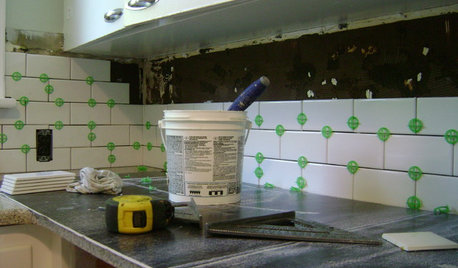






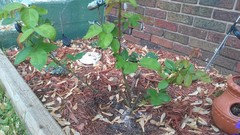
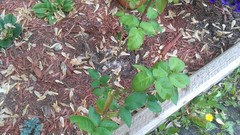
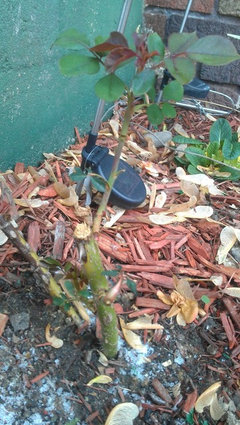

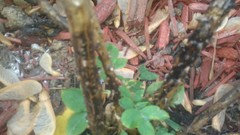

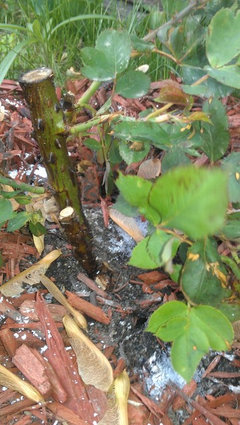


wirosarian_z4b_WI